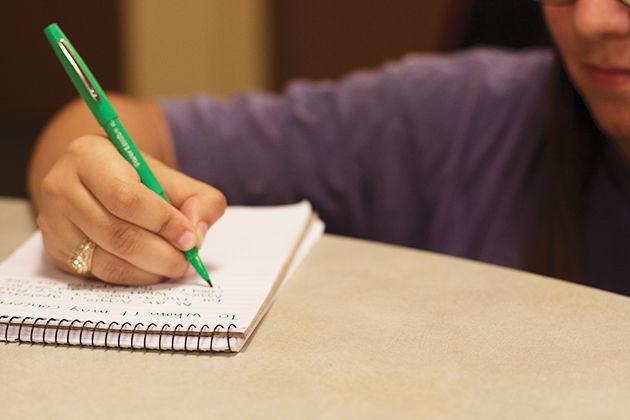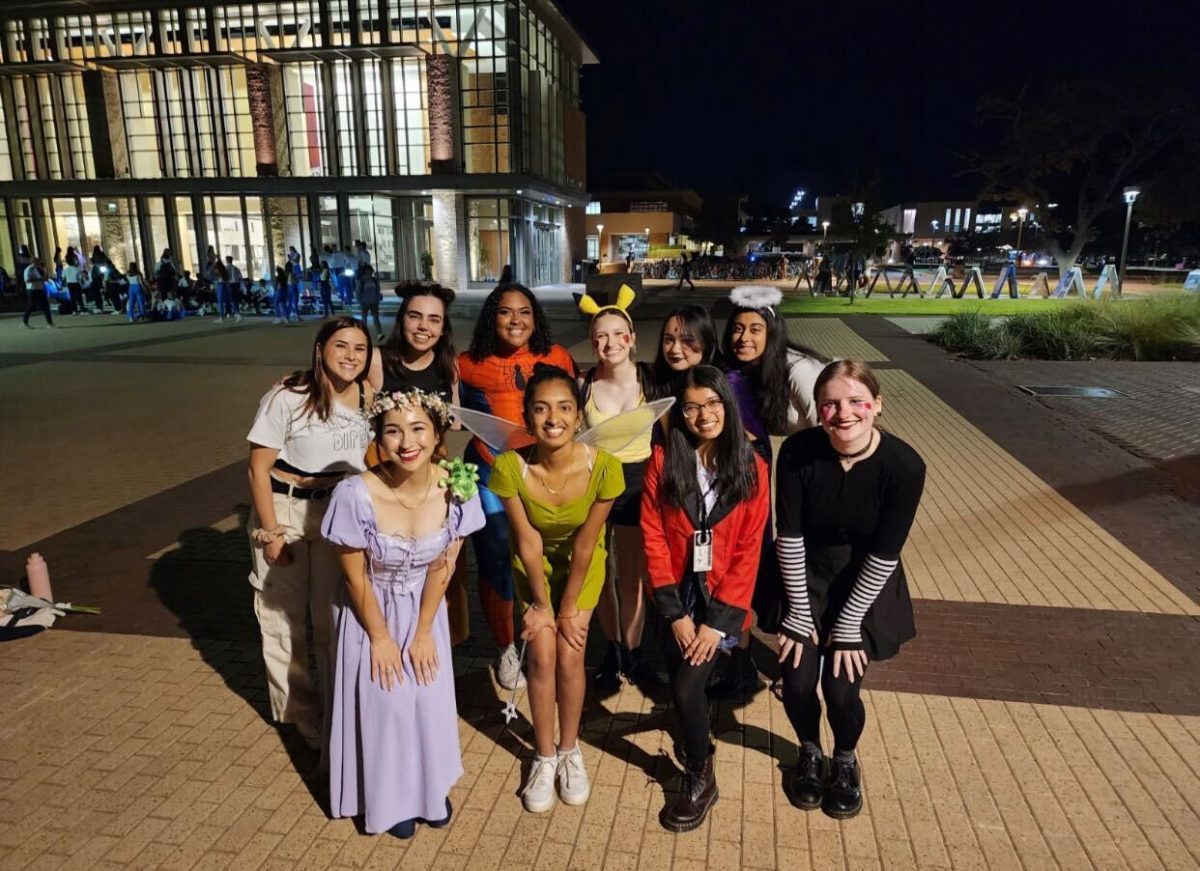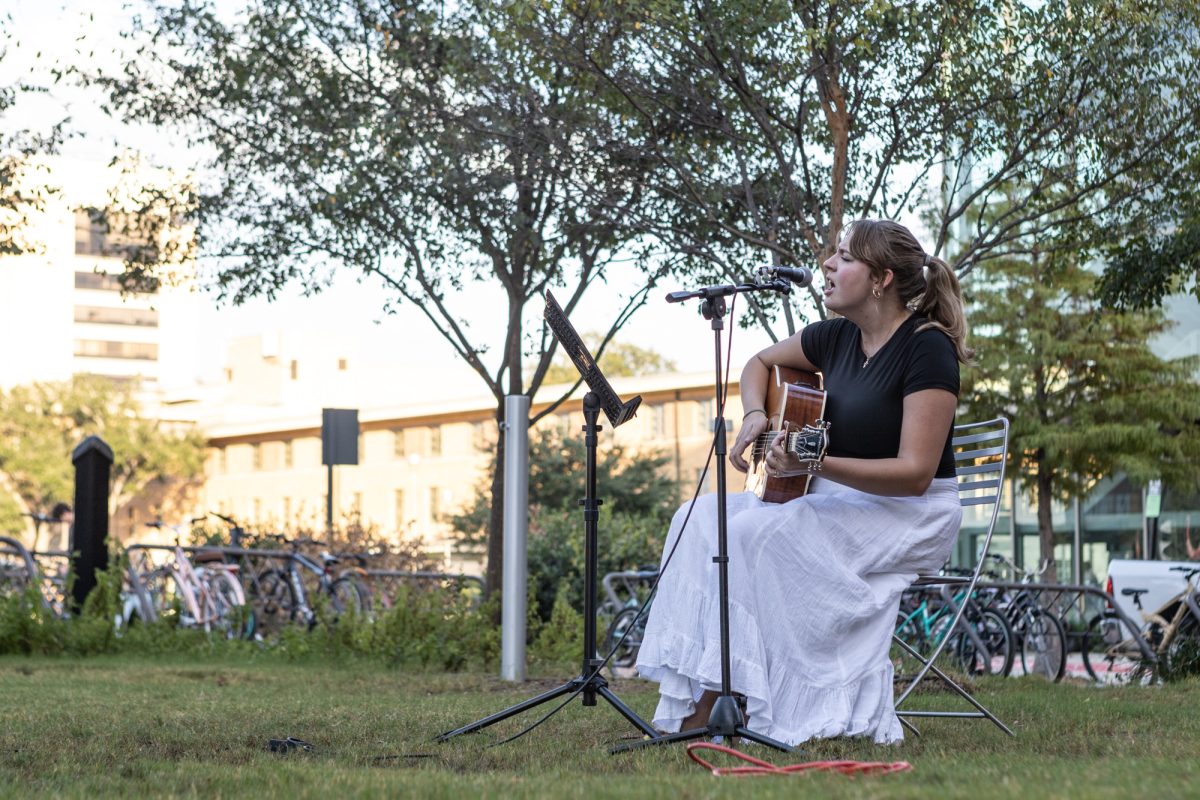Sleepy-eyed college students of varying ages sat nestled behind their glowing laptops in an early morning lecture class, including sophomore Gracia Luo. As the political science professor at the front of the room flipped back and forth through her PowerPoint slides on immigration policy, one student, a white male, suddenly shot his hand in the air. Luo felt the class’s mood shift as everyone turned to look at the raised hand.
Luo knew what was coming. In the past, the male student had made a point to contest the professor anytime a controversial issue was discussed, and each time it caused tension in the room to soar. The student asked a somewhat controversial question when called on, and several students rolled their eyes in protest to what they considered to be his ignorance. Rather than opening a discussion, the professor pointed the student to resources where he could learn more on the topic. The class mood lightened up, and the lecture continued.
As a political science major, Luo said she has seen this exchange occur countless times over, though she has watched different professors handle the situation in other ways.
Three of the Texas A&M professors interviewed, each from a different field of study, emphasized values to keep in place while handling difficult discussions in the classroom. Making conflict a teachable moment is key to navigating difficult dialogues, said Anna Wolfe, assistant professor for the department of communication. Two other Texas A&M professors, Kristi Sweet, associate professor of philosophy and humanities, and Erin Wood, assistant professor of history, emphasized different ideas. Sweet said to push students to get outside of their comfort zones, and Wood said helping students think from different perspectives when having difficult dialogues is of the utmost importance.
Giving students the tools to think for themselves during difficult discussions is a critical job of universities, according to an online op-ed article by Riki Thompson for The Seattle Times.
“In general, I think conflict is not necessarily a bad thing, and it can be productive,” said Wolfe. “We have to be really hearing each other, listening, and asking questions in order to move us past polarizing positions.”
Creating a classroom where students are engaged, feel comfortable asking questions, and are able to admit when they do not know something are goals of the class, said Sweet.
“I try to make them all equally uncomfortable,” said Sweet. “I’m not trying to create a safe space as much as a shared space where it’s okay to not know something and to be uncomfortable.”
Other professors use different approaches. Over a three-week period, Wolfe’s students participated in an immersive simulation in which the class was divided and grew to resent each other in just a few weeks. The simulation was meant to show how easily resentment can form between groups, said Wolfe. At the end of the simulation, the class came back together and tried to get along again, said Wolfe.
“When we see seeds of bad behavior in ourselves, we are more likely to come together and have difficult conversations about it,” said Wolfe.
While pushing students to be uncomfortable can be good, it is also wise to respect students who do not wish to contribute to hard conversations, said Christine Stanley, professor of higher education.
“When you lay the ground rules, you have to tell the students that they may be uncomfortable,” said Stanley. “If they get too uncomfortable, they can say that out loud. You have to be able to let your students say ‘Pass.’”
The issue of how to handle difficult conversations on college campuses occurs nationally, according to an article on Georgetown University’s website. The first step of having productive difficult dialogues is to create ground rules and to keep conversations respectful, and the second step is handling the actual discussions, according to the website.
A professor’s personal approach of how to handle difficult conversations when they arise can also vary, said Sweet. Some professors choose to have an ideological walls between their true personal opinions and what they say in class, said Sweet.
“I go the opposite direction and say here’s what I think, here’s why, here’s what I worry about, and here’s why I may change my mind,” said Sweet. “I am not trying to get them to think what I think. I understand that reasonable people disagree on a lot of these things.”
Getting students to think from different perspectives and to try and understand those perspectives is of the utmost importance, said Wood.
“I don’t want everyone in class to agree on everything, and I am not trying to convert anyone to any specific viewpoint,” Wood said. “I am just trying to expose them to think about why they believe what they believe.”
In order to get students thinking from different perspectives, Wood said she has her students do response papers where they try and explain different perspectives and ideas.
“For every event in history there are many different perspectives,” Wood said. “It’s not just two options, pick one side and the other is wrong.”
One reason conflict arises in classrooms is due to the misinforming of students, said Joe Feagin, distinguished professor of sociology.
“Students often have problems with any kind of topic of which they have not been well-informed,” Feagin said. “One of the problems in all our colleges and universities is that there are a lot of things we do not teach our students about that are fundamental to this history.”
This imbalance of exposure can lead students to react in different ways due to their varying cultural backgrounds, said Marisa Suhm, assistant director of the multicultural services department.
“I think we have a lot to learn from one another, and I think a lot of the conflict comes from a lack of exposure and misunderstanding,” Suhm said. “I think it’s important to be able to put yourself in somebody else’s shoes. Some people’s first reaction is, ‘Oh, that can’t be true’ just because they themselves have not experienced it.”
Which student feels comfortable speaking up during difficult conversations in classrooms and which student does not may have a demographic component to it, said Wood.
“Texas A&M is a majority white school, has people primarily from Texas, has a very strong Christian component, and has a conservative viewpoint,” said Wood. “Not everybody, but the majority. A lot of these difficult topics are things they feel very strongly about, but they don’t always know why.”
A strong sense of self and the knowledge that you are in a safe space to discuss hard issues can also be a factor, said Stanley.
“If you have a strong sense of self, I don’t care how you identify,” Stanley said. “You will speak up about these issues. If you feel you’re in a class where you can be yourself, you are going to be more comfortable.”
Navigating difficult discussion in college classrooms
January 8, 2020
0
Donate to The Battalion
Your donation will support the student journalists of Texas A&M University - College Station. Your contribution will allow us to purchase equipment and cover our annual website hosting costs.









